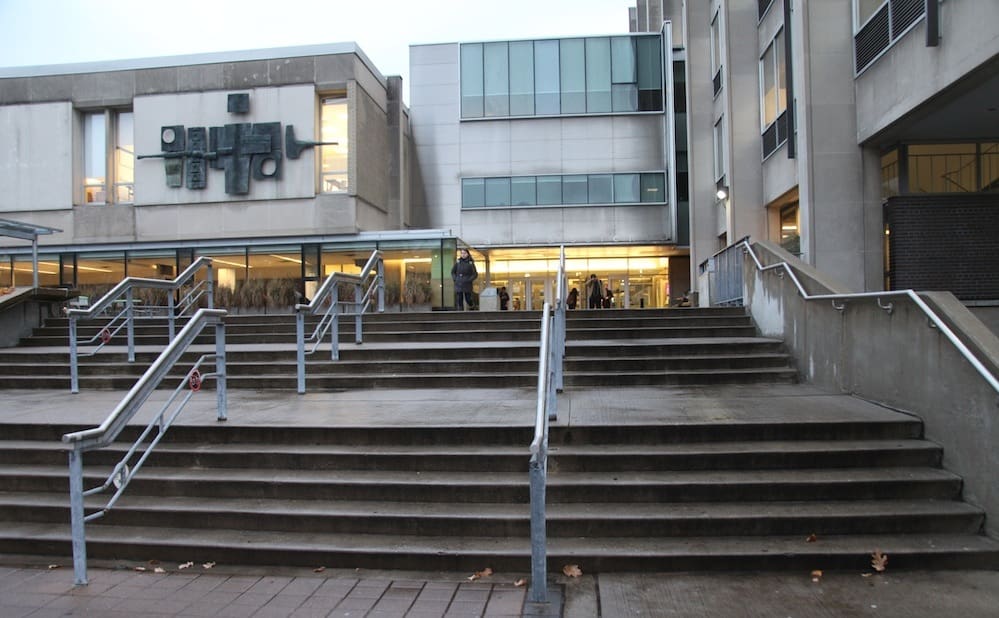On Monday, November 18, 20 University of Toronto students participated in the second annual Great Barrier Hunt. The event, organized by Students for Barrier-free Access (SBA) and the Association of Part-Time Undergraduate Students (APUS), aims to raise awareness of accessibility issues on campus. Using the format of a scavenger hunt, participants perform an accessibility audit of U of T buildings.
Participants audited the Sandford Fleming building, the 21 Sussex Clubhouse, University College, and the North Borden Building. According to Kriya Siewrattan, APUS secretary, the goal of the event “was to get participants to think broadly about accessibility — considering everything from limited mobility, to vision, to gender, to dietary accommodations, to religious observances and more.”
Aisha Raja, centre director for SBA, noted: “Something that many students encountered during the hunt and brought up over and over again is the lack of proper signage. There’s no standard for signage. Every building follows its own rules. Some have really small, hard to read signs and [do] not [have] clear instructions.” Raja cited North Borden as an example of a building with improper signage.
According to Siewrattan, the university is not fulfilling its obligations under the Accessibility for Ontarians with Disabilities Act. The university currently relies on “user-based identification of barriers and user-initiated strategies for accommodation,” she noted. Siewrattan alleges that this approach means that accessibility issues can go uncorrected for long periods of time. For example, Sidney Smith Hall, one of the busiest buildings on campus, does not have a wheelchair ramp at its main entrance on St. George Street.
Yolen Bollo-Kamara, vice-president, equity of the University of Toronto Students’ Union, also expressed concern over the university’s current approach. “Often, accessibility issues are addressed after students are already in crisis or have been denied equity in access,” she said.
At the university, most accessibility issues are addressed through Accessibility Services. Accessibility Services provides students with a number of services, including test and exam accommodations. The University’s Office of Space Management (OSM) works with Accessibility Services to address physical accessibility needs, such as elevators and power door openers.
The OSM and Accessibility Servcies were contacted for this article. Both suggested contacting the other organization and declined comment themselves.
Bollo-Kamara believes that the university’s slow response time is largely the result of underfunded programs. “There needs to be more funding for Accessibility Services and Counselling and Psychological Services (CAPS) in particular, so we can expand their reach,” she noted.
According to Siewrattan, building accessibility issues usually have simple fixes. “A simple change could include more campus maps, elevators that announce floors, braille on signs, single-stalled washrooms, better lighting, [and] powered doors,” she said.
Raja agrees. “I think the university has begun to undertake many important projects to begin addressing accessibility needs,” she noted, “but there still is much work that needs to be done.” Raja cited the Athletic Centre as an example of a building with a high standard for accessibility.
Both APUS and SBA plan to run the event again next year.


